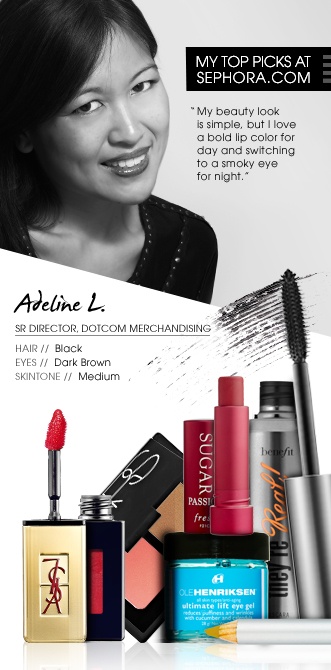Pinterest Case Study: Sephora
Regina Ruiz
Organization
Sephora is a visionary beauty-retail concept founded in France by Dominique Mandonnaud in 1970. Sephora's unique, open-sell environment features an ever-increasing amount of classic and emerging brands across a broad range of product categories including skincare, color, fragrance, body, smilecare, and haircare, in addition to Sephora's own private label.
Headquartered at 70-72 Champs-Élysées in Paris, Sephora is not only the leading chain of perfume and cosmetics stores in France, but also a powerful beauty presence in countries around the world.
Business Need
Sephora wanted to increase its brand presence among users globally as well as increase engagement. Furthermore, Sephora aimed to create a more “shoppable” experience by making it easier for users to create Pinterest boards of their favorite products by category and items on their wish list, thus increasing reach throughout the Pinterest platform.
Social Media Solutions
Sephora set out to establish a visually-beautiful, user-friendly and interactive experience for its users on Pinterest. Sephora delineated the following goals and business practices:
-
Make it easy to pin from Sephora.com
-
Use email to encourage Pinterest engagement
-
Encourage clients to pin their beauty ‘shopping lists’
“Pinterest is the perfect venue to visually share shoppable new products, how-to’s, and cool images. It’s a place to get inspired by beauty.”
Julie Bornstein, CMO & Chief Digital Officer
One particularly successful strategy is the use of boards to store “It Lists.” These are curated by Sephora staff, and make it easy to highlight authentic favorite products of Sephora staffers as well as any special product tips and tricks. Sephora clients can pin these products to their own lists as favorites or later purchases.
Pinnable emailing was another of the main strategies Sephora employed in order to drive engagement and build branding. Sephora sent out emails featuring new products with links to their Pinterest account in the email footer to drive pinners and pinning activity. In 2012 they decided to take their email marketing one step further by creating Pinterest-centric emails and enabling users to pin directly from within the email. To help drive a more connected experience with Sephora’s Pinterest profile, they created and continue to create new boards that reflect the design of their emails, such as the Color Blocking board, which appeared in an autumn 2012 email.
Furthermore, by using Pinterest Web Analytics to observe the kinds of content that get the most pins and repins, they ascertain which content is most popular with pinners—such as beauty lists, color swatches, and face charts.
Business results
Sephora’s focus on facilitating sharing beauty expertise has resulted in nurturing a highly qualified audience. The average Pinterest follower spends 15 times more money on Sephora.com than the average Facebook fan.
To this date, Pinnable emails remain one of the most successful engagement strategies. Pinnable emails result in significantly increased pinning activity for the featured products. The Color Blocking email generated more than 14,000 repins, for example. Two of the most repinned images to date were featured in a Pinterest email that went out to their entire client list. In the month following the first email campaign, Sephora also saw 60% growth in traffic from Pinterest.
